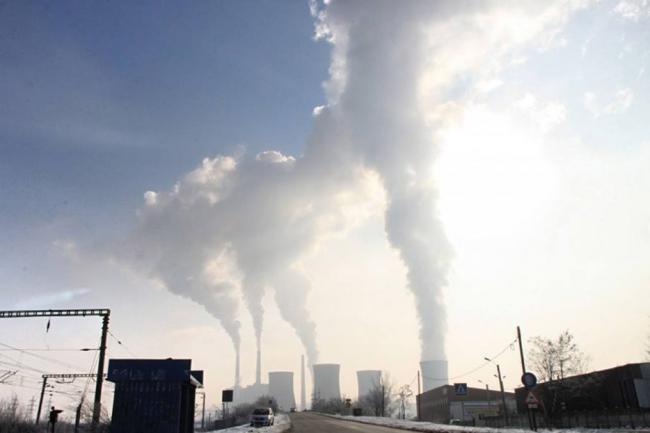
El Niño drives concentration of C02 in atmosphere to new high – UN weather agency
“The year 2015 ushered in a new era of optimism and climate action with the Paris climate change agreement. But it will also make history as marking a new era of climate change reality with record high greenhouse gas concentrations,” said World Meteorological Organization (WMO) Secretary-General Petteri Taalas.
Taalas says that ‘without tackling carbon dioxide emissions, we cannot tackle climate change and keep temperature increases to below 2 degrees Celcius above the pre-industrial era. “It is therefore of the utmost importance that the Paris Agreement does indeed enter into force well ahead of schedule on 4 November and that we fast-track its implementation,” he added.
The weather agency had warned earlier this year that the Earth is already one degree Celsius hotter than at the start of the 20th century, halfway to the critical two-degree threshold, and national climate change plans adopted so far may not be enough to avoid a three-degree temperature rise.
CO2 levels had previously reached the 400 parts per million barrier for certain months of the year and in certain locations but never before on a global average basis for the entire year.
The growth spurt in carbon dioxide was fuelled by the El Niño event, which started in 2015 and had a strong impact well into 2016. This triggered droughts in tropical regions and reduced the capacity of “sinks” like forests, vegetation and the oceans to absorb CO2. These sinks currently absorb about half of CO2 emissions but there is a risk that they may become saturated, which would increase the fraction of emitted carbon dioxide which stays in the atmosphere, according to the Greenhouse Gas Bulletin.
Between 1990 and 2015 there was a 37 per cent increase in radiative forcing – the warming effect on our climate – because of long-lived greenhouse gases such as carbon dioxide, methane and nitrous oxide (N2O) from industrial, agricultural and domestic activities.
“The 400 parts per million threshold is of great symbolic importance,” said the previous WMO Secretary-General Michel Jarraud in 2014. “It should serve as yet another wakeup call about the constantly rising levels of greenhouse gases which are driving climate change and acidifying our oceans,” he said.
For thousands of year’s carbon dioxide remains in the atmosphere, trapping heat and causing the earth to warm further. The lifespan of carbon dioxide in the oceans is even longer. It is also the single most important greenhouse gas emitted by human activities. According to the WMO it is responsible for 85 per cent of the warming effect on our climate over the past decade.
Post-Paris climate action
“The recent agreement in Kigali to amend the so-called Montreal Protocol and phase out hydrofluorocarbons (HFCs) used in air conditioners and refrigerators, which act as strong greenhouse gases, is good news. WMO salutes the commitment of the international community to meaningful climate action,” said Mr Taalas.
The landmark deal to reduce the emissions of potent chemicals, signed by nearly 200 countries, was hailed by The UN Environment Programme as the single largest contribution the world has made towards keeping the global temperature rise "well below" 2 degrees Celsius.
The deal to curb HFCs comes amid a flurry of climate-related action, as a couple of weeks ago, two key events occurred: Member States of the UN civil aviation agency, known as ICAO, agreed on a new standard to control global greenhouse gas emissions from international airline flights; and the Paris Agreement on climate change cleared the final threshold of 55 countries representing 55 per cent of global emissions required for the accord to enter into effect, now set for early November.
Photo: UNEP
Source: www.justearthnews.com
Support Our Journalism
We cannot do without you.. your contribution supports unbiased journalism
IBNS is not driven by any ism- not wokeism, not racism, not skewed secularism, not hyper right-wing or left liberal ideals, nor by any hardline religious beliefs or hyper nationalism. We want to serve you good old objective news, as they are. We do not judge or preach. We let people decide for themselves. We only try to present factual and well-sourced news.







